In the hilly terrains of Dima Hasao, Assam lies one of the unresolved mysteries of nature. Planked by the rivers, Jatinga and Dulong, and surrounded by the Borail hills of North Cachar, Jatinga valley marks the pathway for thousands of flocks of the bird every year. But during the period from September to November a strange occurrence has been noticed. Birds lose control and fly down towards fire and searchlights, hurting themselves in the process. This is seen only on a stretch of 1.5km long and 200m wide around 6pm-10pm when the local migratory birds from neighbouring valleys fly down getting attracted to the fire lit by the villagers and get injured or die after hitting against a building or tree. This phenomenon has been popularly named as the ‘bird suicides’ or ‘avian harakiri’ as the locals call it. The common birds involved in the phenomenon are tiger bittern, black bittern, little egret, pond heron, Indian pitta, kingfishers, hill partridge, green pigeon, emerald dove, necklaced laughingthrush, black drongo.
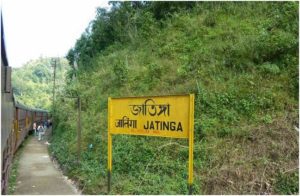 Jatinga’s abandoned Railway station
Jatinga’s abandoned Railway station
But contrary to the popular belief the birds do not commit suicide. From the months of September to November thick fog covers the forests of Jatinga and a wind blows from south to north. This wind brings with it descending delusional birds, hazed and disoriented. Out of the dark skies, these birds fly down like shooting stars and for a long period of time were feared to be evil spirits. When it was first observed by the Zeme Nagas, the native tribe of the region in the early 1900s, it scared them to the extent that they sold their land to Jaintias and left the place. But the new inhabitants had a different approach as they labelled this phenomenon as the Gift of God.
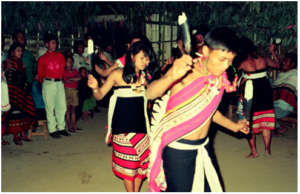
Zeme Nagas
- G. Pee, the late naturalist, was the first to bring global attention to it in the 1960s. He personally drove Late Salim Ali, the Birdman of India to Jatinga to study the phenomenon. But after many research, no concrete reason could be surfaced. What astonished Dr Salim Ali the most was that the birds usually involved in this phenomenon were species of the diurnal resident who should be sleeping at night instead of migrating at all. At last, it was settled that the most likely cause is disorientation at high altitudes and high-speed winds due to high fog density though they couldn’t come up with any reasons for why those specifics species and that specific area. Anwaruddin Chowdhury, the most noted ornithologist of Assam, recorded his studies in the book ‘The Birds of Assam’.
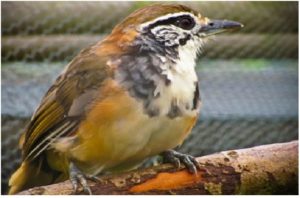 Necklaced laughingthrush
Necklaced laughingthrush
Years later, Dr Sudhir Sengupta, under the Zoology Survey of India, lived in the valley to understand the reason. His ongoing research gives a substantial cause for the phenomenon though nothing concrete has been found yet. According to him, the atmospheric conditions make a modification of magnetic qualities of subterranean water of the region and these changes disturb the physiological nature of birds making them behave abnormally towards the sources of light. His research has also been supported by the observations of the Indian Institute of Geomagnetism. He also believes that the Jatinga valley provides optimum aerodynamic conditions for easier flying compared to higher altitudes and is the pathway for migration. Though he is still studying why those specific species are the only ones affected and why these changes occur at all.
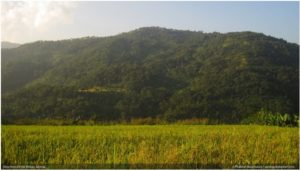 View from the Ethnic village, Jatinga
View from the Ethnic village, Jatinga
This mystery each year attracts many tourists and scientists thus giving birth to the Jatinga Bird Festival. The festival was originally started in 2010 to promote tourism in the area using the bird mystery as an attraction but now has turned into a cultural fest where regional tribes showcase their culture. It also has other activities like trekking and water sports. Usually, the festival is held in September or October and is celebrated for three days that coincide with the new moon when the chances of the bird phenomenon to occur are the highest. The watchtower in Jatinga is the prime tourist destination as the searchlight attracts the birds travelling across the valley.
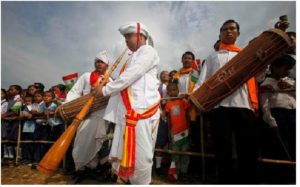 Tribes performing at the festival
Tribes performing at the festival
About 350km away from the nearest airport Guwahati, the most recommendable way to get to Jatinga is by taking the train to Haflong, the only hill station in Assam, and from there a 20 minutes car ride to Jatinga. The whole journey itself is a picturesque one covered in semi-evergreen lush peeking through the descended clouds of the late monsoons. So, the next time you’re in North-East around this time be sure to catch on the century-old mystery of Jatinga!
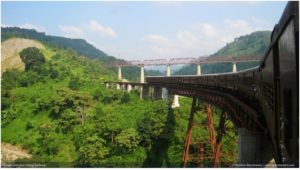 Train to Haflong
Train to Haflong

